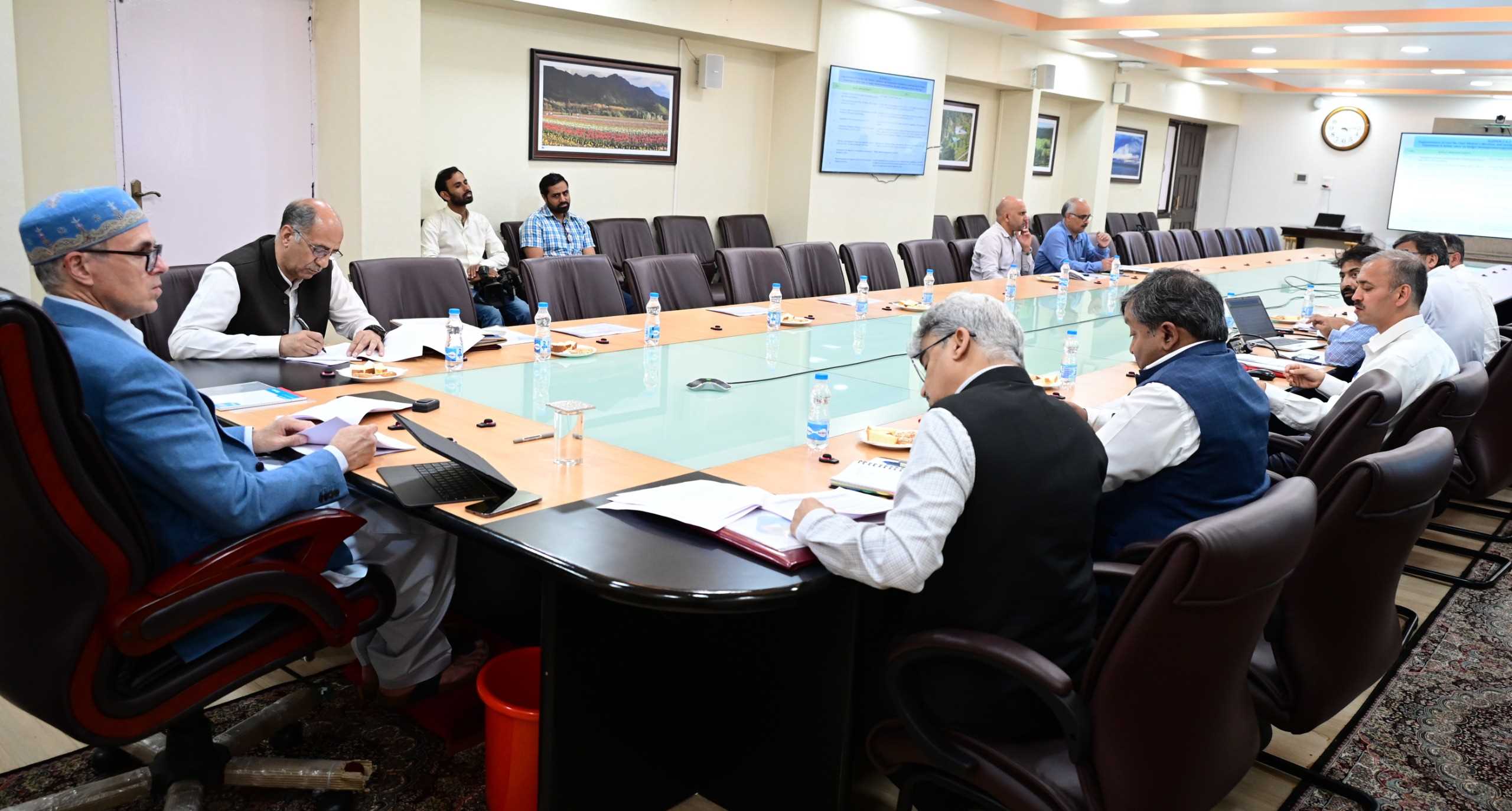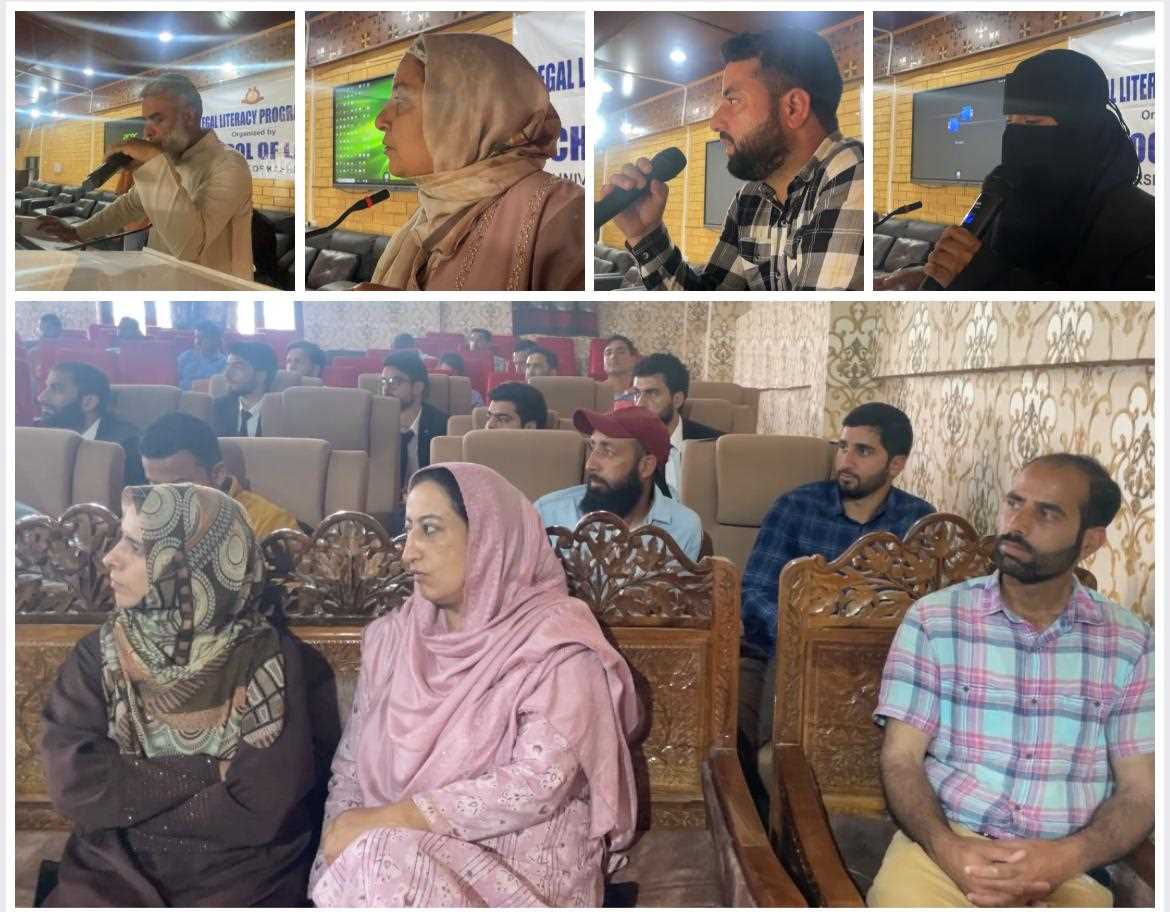
Introduction
Kashmir, often referred to as "Paradise on Earth," has long captivated travelers with its breathtaking landscapes, snow-capped peaks, gushing rivers, and centuries-old cultural heritage. While traditional tourist spots like Gulmarg, Pahalgam, and Srinagar have consistently attracted large numbers of visitors, a newer form of exploration has gained traction in recent years — border tourism.
This initiative, spearheaded by the Jammu and Kashmir administration and supported by the Indian government, aimed to open up regions near the Line of Control (LoC) and International Border (IB) to tourists. It was more than a leisure activity; it was a strategic soft diplomacy tool to foster national integration, support local economies, and give the rest of the country a glimpse into the resilience and beauty of life on the frontier.
However, this carefully nurtured tourism initiative now lies in ruins. A resurgence of cross-border shelling by Pakistan following the terror attack in Pahalgam on April 22, 2025, which killed 26 civilians, has brought tourism to a screeching halt in many border villages, shattering dreams and plunging entire communities back into fear and economic hardship.
The Rise of Border Tourism
The idea of opening up border areas for tourism emerged from a desire to demystify life at the periphery and to bolster the sense of belonging among people residing in the hinterlands. The areas of Gurez, Keran, Machil, Tangdhar, and Uri — long off-limits due to security restrictions — began to welcome tourists under supervised conditions.
These areas, once synonymous with conflict, transformed into scenic getaways with homestays, trekking trails, mountain biking routes, and river angling experiences. In particular:
Gurez Valley saw a phenomenal rise in visitors, especially during the summer months, when its alpine meadows came alive. The valley, overlooked by the iconic Habba Khatoon peak, was fast becoming a destination for trekkers, photographers, and those seeking solitude.
Keran, situated on the banks of the Kishanganga River, with Pakistani villages visible across the river, was celebrated as a symbol of peaceful coexistence — until hostilities resumed.
Local entrepreneurs invested in tourism infrastructure. Women ran food stalls and handicraft centers; youth worked as guides; and entire communities participated in welcoming guests from across India, many of whom expressed awe at the peaceful reality that defied negative stereotypes about border life.
The symbolic importance of these efforts cannot be overstated. Border tourism was a message — that peace and prosperity could bloom even in historically militarized zones.
Terror Strikes and the Return of Shelling
That sense of fragile peace was shattered on April 22, 2025, when a terrorist attack in Pahalgam resulted in the deaths of 26 civilians, most of them tourists. The attack, attributed to Pakistan-based terror outfits, drew sharp condemnation and triggered a fresh round of cross-border tensions.
In the weeks that followed, Pakistani forces resorted to heavy shelling across several sectors including Poonch, Rajouri, Baramulla, Kupwara, and parts of the Jammu region such as Arnia and Samba. Mortars and small-arms fire became a grim reminder of the 1990s and early 2000s when border firing was a frequent and terrifying occurrence.
Tourist bookings were instantly cancelled. Entire stretches that had recently thrived with activity — including homestays, campsites, and small cafés — fell silent. The scenic valleys of Gurez and Keran, previously dotted with tents and trekking groups, became ghost towns overnight.
Local Voices and Livelihoods Destroyed
In Gurez, Zahoor Ahmad, a homestay owner, lamented the sudden collapse of what was becoming a dependable source of income: “We had bookings till August. Everything was going well. But now we are back to those days when we only heard explosions, not conversations.”
The collapse of border tourism has had a cascading impact on the local economy. From taxi drivers to local artisans, food vendors to photographers — entire micro-economies built around tourism now face existential threats. For many families, tourism was not just a source of income, but a lifeline that reduced dependency on subsistence farming or risky cross-border smuggling operations that once thrived in these remote areas.
Humanitarian Toll
Beyond tourism, the human cost of the renewed shelling is grave. Villagers have been forced into makeshift underground bunkers — often poorly ventilated and lacking basic hygiene. These bunkers, initially constructed during earlier periods of cross-border hostilities, have aged poorly and offer little comfort. Children sleep on dirt floors, elderly residents complain of respiratory issues, and mothers speak of the trauma their children are undergoing.
In the Arnia sector, located along the Jammu-IB corridor, hundreds of families were moved to designated shelters by the local administration. Officials have tried to provide food and medical care, but the sheer scale of displacement has overwhelmed available resources.
As per official reports from early May 2025, at least 15 civilians were killed and dozens injured due to cross-border shelling in the last two weeks of April alone. This violence has reignited fears among border residents who had only recently begun to hope for a stable future.
Security and Symbolism
In a bid to restore some normalcy, the Border Security Force (BSF) resumed the Beating the Retreat ceremony at the Attari-Wagah border in Punjab. The move was symbolic, intended to showcase resolve and continuity. However, in contrast to the pre-crisis grandeur, the ceremony is now conducted without the opening of gates and without handshakes between Indian and Pakistani rangers — a silent but powerful signal of current tensions.
Meanwhile, in Kashmir and Jammu, border security has been tightened. Civilian movement near the LoC has been restricted. Night patrols have increased, and intelligence inputs suggest heightened terror activity across the border.
Government Response and Policy Measures
The Jammu and Kashmir government, along with central agencies, has undertaken a multi-pronged response:
1.Relief Camps have been established in Rajouri, Poonch, and Jammu districts, offering shelter and medical support to displaced families.
2.Damage Assessments are being carried out to evaluate losses to civilian infrastructure, including tourism properties. Compensation is being promised, but actual disbursement is likely to be delayed.
3.The Tourism Department is now refocusing efforts on relatively safer zones like Sonamarg, Yusmarg, and Doodhpathri, trying to salvage the broader tourism season which typically peaks in summer.
4.Security officials are contemplating a cordon-based tourism model in sensitive zones, where visitors can travel under escort and within predefined limits, though such measures may not offer true relief to businesses that thrive on free movement and interaction.
A Hope for Peace Amid Ruins
Despite the gloom, the people of these regions remain resilient. Local panchayats and youth groups are rallying together to help the displaced. NGOs are distributing essential supplies. Social media campaigns have been launched by tourism stakeholders urging the government to act swiftly and support affected families.
The future of border tourism in Kashmir now depends heavily on sustained diplomatic efforts and a strict crackdown on terror infrastructure. Without peace, no infrastructure can survive. And without people, no tourism model — no matter how well designed — can succeed.
Conclusion
The tragedy unfolding in Kashmir's border regions is a grim reminder of how fragile peace truly is. The promise of border tourism — once hailed as a beacon of hope for development and coexistence — has been cruelly interrupted by violence.
For the locals who had tasted the first fruits of stability, the situation is a painful step backward. Yet, there is hope. Kashmir has repeatedly shown that it can rise from adversity — but it needs support, security, and sustained policy commitment.
To reclaim the dream of border tourism, lasting peace must replace shelling, development must outpace destruction, and the voices of those living on the edge — both literally and metaphorically — must be heard, protected, and empowered.




Introduction
Kashmir, often referred to as "Paradise on Earth," has long captivated travelers with its breathtaking landscapes, snow-capped peaks, gushing rivers, and centuries-old cultural heritage. While traditional tourist spots like Gulmarg, Pahalgam, and Srinagar have consistently attracted large numbers of visitors, a newer form of exploration has gained traction in recent years — border tourism.
This initiative, spearheaded by the Jammu and Kashmir administration and supported by the Indian government, aimed to open up regions near the Line of Control (LoC) and International Border (IB) to tourists. It was more than a leisure activity; it was a strategic soft diplomacy tool to foster national integration, support local economies, and give the rest of the country a glimpse into the resilience and beauty of life on the frontier.
However, this carefully nurtured tourism initiative now lies in ruins. A resurgence of cross-border shelling by Pakistan following the terror attack in Pahalgam on April 22, 2025, which killed 26 civilians, has brought tourism to a screeching halt in many border villages, shattering dreams and plunging entire communities back into fear and economic hardship.
The Rise of Border Tourism
The idea of opening up border areas for tourism emerged from a desire to demystify life at the periphery and to bolster the sense of belonging among people residing in the hinterlands. The areas of Gurez, Keran, Machil, Tangdhar, and Uri — long off-limits due to security restrictions — began to welcome tourists under supervised conditions.
These areas, once synonymous with conflict, transformed into scenic getaways with homestays, trekking trails, mountain biking routes, and river angling experiences. In particular:
Gurez Valley saw a phenomenal rise in visitors, especially during the summer months, when its alpine meadows came alive. The valley, overlooked by the iconic Habba Khatoon peak, was fast becoming a destination for trekkers, photographers, and those seeking solitude.
Keran, situated on the banks of the Kishanganga River, with Pakistani villages visible across the river, was celebrated as a symbol of peaceful coexistence — until hostilities resumed.
Local entrepreneurs invested in tourism infrastructure. Women ran food stalls and handicraft centers; youth worked as guides; and entire communities participated in welcoming guests from across India, many of whom expressed awe at the peaceful reality that defied negative stereotypes about border life.
The symbolic importance of these efforts cannot be overstated. Border tourism was a message — that peace and prosperity could bloom even in historically militarized zones.
Terror Strikes and the Return of Shelling
That sense of fragile peace was shattered on April 22, 2025, when a terrorist attack in Pahalgam resulted in the deaths of 26 civilians, most of them tourists. The attack, attributed to Pakistan-based terror outfits, drew sharp condemnation and triggered a fresh round of cross-border tensions.
In the weeks that followed, Pakistani forces resorted to heavy shelling across several sectors including Poonch, Rajouri, Baramulla, Kupwara, and parts of the Jammu region such as Arnia and Samba. Mortars and small-arms fire became a grim reminder of the 1990s and early 2000s when border firing was a frequent and terrifying occurrence.
Tourist bookings were instantly cancelled. Entire stretches that had recently thrived with activity — including homestays, campsites, and small cafés — fell silent. The scenic valleys of Gurez and Keran, previously dotted with tents and trekking groups, became ghost towns overnight.
Local Voices and Livelihoods Destroyed
In Gurez, Zahoor Ahmad, a homestay owner, lamented the sudden collapse of what was becoming a dependable source of income: “We had bookings till August. Everything was going well. But now we are back to those days when we only heard explosions, not conversations.”
The collapse of border tourism has had a cascading impact on the local economy. From taxi drivers to local artisans, food vendors to photographers — entire micro-economies built around tourism now face existential threats. For many families, tourism was not just a source of income, but a lifeline that reduced dependency on subsistence farming or risky cross-border smuggling operations that once thrived in these remote areas.
Humanitarian Toll
Beyond tourism, the human cost of the renewed shelling is grave. Villagers have been forced into makeshift underground bunkers — often poorly ventilated and lacking basic hygiene. These bunkers, initially constructed during earlier periods of cross-border hostilities, have aged poorly and offer little comfort. Children sleep on dirt floors, elderly residents complain of respiratory issues, and mothers speak of the trauma their children are undergoing.
In the Arnia sector, located along the Jammu-IB corridor, hundreds of families were moved to designated shelters by the local administration. Officials have tried to provide food and medical care, but the sheer scale of displacement has overwhelmed available resources.
As per official reports from early May 2025, at least 15 civilians were killed and dozens injured due to cross-border shelling in the last two weeks of April alone. This violence has reignited fears among border residents who had only recently begun to hope for a stable future.
Security and Symbolism
In a bid to restore some normalcy, the Border Security Force (BSF) resumed the Beating the Retreat ceremony at the Attari-Wagah border in Punjab. The move was symbolic, intended to showcase resolve and continuity. However, in contrast to the pre-crisis grandeur, the ceremony is now conducted without the opening of gates and without handshakes between Indian and Pakistani rangers — a silent but powerful signal of current tensions.
Meanwhile, in Kashmir and Jammu, border security has been tightened. Civilian movement near the LoC has been restricted. Night patrols have increased, and intelligence inputs suggest heightened terror activity across the border.
Government Response and Policy Measures
The Jammu and Kashmir government, along with central agencies, has undertaken a multi-pronged response:
1.Relief Camps have been established in Rajouri, Poonch, and Jammu districts, offering shelter and medical support to displaced families.
2.Damage Assessments are being carried out to evaluate losses to civilian infrastructure, including tourism properties. Compensation is being promised, but actual disbursement is likely to be delayed.
3.The Tourism Department is now refocusing efforts on relatively safer zones like Sonamarg, Yusmarg, and Doodhpathri, trying to salvage the broader tourism season which typically peaks in summer.
4.Security officials are contemplating a cordon-based tourism model in sensitive zones, where visitors can travel under escort and within predefined limits, though such measures may not offer true relief to businesses that thrive on free movement and interaction.
A Hope for Peace Amid Ruins
Despite the gloom, the people of these regions remain resilient. Local panchayats and youth groups are rallying together to help the displaced. NGOs are distributing essential supplies. Social media campaigns have been launched by tourism stakeholders urging the government to act swiftly and support affected families.
The future of border tourism in Kashmir now depends heavily on sustained diplomatic efforts and a strict crackdown on terror infrastructure. Without peace, no infrastructure can survive. And without people, no tourism model — no matter how well designed — can succeed.
Conclusion
The tragedy unfolding in Kashmir's border regions is a grim reminder of how fragile peace truly is. The promise of border tourism — once hailed as a beacon of hope for development and coexistence — has been cruelly interrupted by violence.
For the locals who had tasted the first fruits of stability, the situation is a painful step backward. Yet, there is hope. Kashmir has repeatedly shown that it can rise from adversity — but it needs support, security, and sustained policy commitment.
To reclaim the dream of border tourism, lasting peace must replace shelling, development must outpace destruction, and the voices of those living on the edge — both literally and metaphorically — must be heard, protected, and empowered.
© Copyright 2023 brighterkashmir.com All Rights Reserved. Quantum Technologies